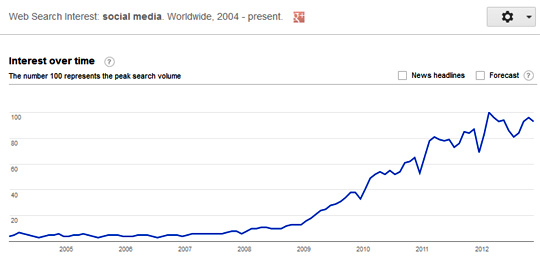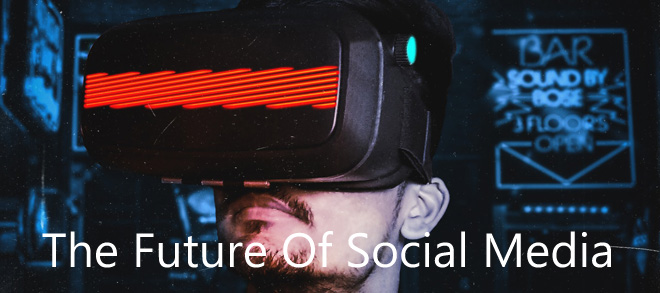I can recall just four years ago when I excitedly told my mother about a Facebook page that I established for my high school, which closed in 1985, had just reached 1000 members. She looked at me and said,
Aren’t you too old for that?
She has since joined Facebook and regularly posts pictures, news articles, and family updates.
Social media is unavoidable. Churches use it to get out information to members. Civic groups keep their residents informed on local issues. Restaurants, sports teams, and entertainment organizations alert their interested members to upcoming events as well as ticket and menu specials. Companies increase brand awareness and loyalty.
Ultimately, it is all about developing a community with like-minded individuals and the instant sharing of information. It is here to stay, but, as with all technology and social elements, it will evolve, and is, evolving.
What is Social Media?
Simply put, social media fosters the dissemination of information between individuals and groups using web-based applications. Twitter and Facebook are currently the kings of social media.
One of the first forms of social media with the advent and growth of the internet in the 1990’s was the Forum. Here, people could create and/or post messages regarding a particular subject or event and publish their thoughts to a large audience. Internet forums still exist, but they have matured with social buttons that allow users to simultaneously post their words to other mediums across the internet with the click of a button.
Weblogs, blogs, podcasts, wikis, video, social bookmarking, user reviews, virtual social worlds, and more, have enlarged the capacity for people to imbibe a vast amount of resources in a very little time, as well as share locally and globally, to either a select few, or broadly. It is this interactive revolution that led to Facebook’s fantastic growth as they now have nearly 1 billion users worldwide.
The Explosion of Mobile Social Media
With the proliferation of smart phones, such as Apple’s iPhone or any number of Android-based phones, local and national companies are quickly getting on board to create content that can be accessed by people on the go with their smart phones. While 30% of the world’s smart phone users are in China and India, the USA is saturated at nearly 100% of the population.

Mobile phone users in the USA are using these devices to do everything from shop for flowers, a car mechanic, or a restaurant, to posting pictures on Facebook, or researching a potential client on LinkedIn. This means mobile search is increasing rapidly. Unfortunately, most locally-based businesses have not yet invested in this technology and are losing market share to their competitors who are.
Because users are spending more time on their smart phones and depending on them for information, advertising for mobile is growing quickly, though well behind as a percent what other online mediums and media’s are commanding. For example, 10% of users depend on smart phones for search, but mobile search only commands 1% of the advertising dollar, while print media is dying at 7%, yet still commands over 25% of all ad spend.
Advancements in mobile ad units, mobile search, mobile apps, mobile websites, and SMS are now being successfully embraced by advertisers to drive brand awareness, consideration, purchases, and loyalty. Yet the disparity remains. Web marketing companies have to do a better job of convincing their clients and prospective customers that this is where the future lies.
Types of Mobile Media
- Space-Timers: Location and time-sensitive, this brand of time-sensitive social media is what Yelp, Foursquare and Facebook Places provides.
- Space-Locators: Only location sensitive and can be read later by followers. Yelp and Qype are examples of this kind of social media.
- Quick-Timers: This time-sensitive technology is mobile-based and offers traditional social media applications to increase immediate awareness or responses. Examples are Twitter and Facebook status updates.
- Slow-Timers: these are neither time nor location sensitive. Example would be watching a video on YouTube or from Fox News online or reading an article or record review.
Social Media Innovation
Each new social media technology begets the next innovative platform. Each innovation becomes the building block from which newer, heartier technology is born. Mobile is quickly becoming the genre that brilliant web developers are working in as artwork, access, user-ability, speed, and creativity continue to excel.
Voice control is the next great arena of innovation. While we have seen this with Bluetooth and other voice-command apps, the technology is only now emerging as the basics of mobile development have found solid footing.
Mobile phones were just that for many years – devices with which to talk to another individual. With the advent of the smart phone, it is not unusual now to see many owners and users doing almost everything from playing games, posting to social sites, to ordering a book or concert tickets while checking out to see if they have friends in their immediate area they want to hook up with, instead of talking. In fact, more than two-thirds of the time mobile users are performing non-verbal communication with their devices.
For every 72 minutes of verbal chat they are using their phones for 94 minutes a day on other things, like search and social media
Soon, television will be second to smart phones when it comes to media consumption, and social media is where much of this is occurring.
Social media advertising companies are gathering as much information they can on social media usage, both via the traditional computer, and now, the smart phone or iPad-type device. This information will be used to tailor marketing programs directly at the individual user. We see some of this with Facebook and other social media platforms now.
When “liking” something, let’s say a business, technology will allow them to target you directly with special notices, and even know if you have entered their store. To some this is invasive. The only solution is not to like anything in your social media world. But that is nearly impossible as users promote their identity by promoting what they like online. All of this is captured, and will be used.
Social media companies tell us it is to help them help us, and streamline our search for goods and services, much less people, that we like or may enjoy.
Broadcast media is the next big thing. Internet-based radio and television is starting to gain headway in our lives. As broadband capabilities increase and become cheaper, our ability to stream live television, or watch movies from Netflix while in a car, a plane, a resort, or our office, will become more predominant than watching from home. Comcast now has an app that allows subscribers to watch many shows directly from their phone, program their DVR, or get email from their account. TV shows are now being created for the internet, and social communities are developing around them. Instant access to all these through some form of social media is upon us and growing.
The Future of Social Media
The future of social media is wide open, and imaginations are soaring as web developers, like Revenflo, DocumentCloud, Grantland, Nike, and others seek to provide user-friendly, purpose-driven, scalable, and accessible products to help people, organizations, entities, and companies develop social communities that benefit from the all of the information so many willingly share.
[Main Photo by Harsch Shivam from Pexels]
RevenWriters, specialists in Web Presence… Chad Smith is one of the team of writers dedicated to making the Internet a better place.

Comments are closed.